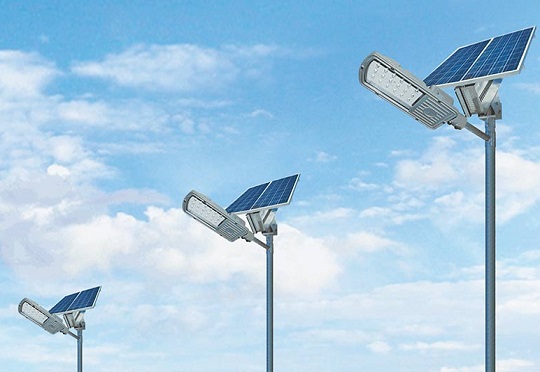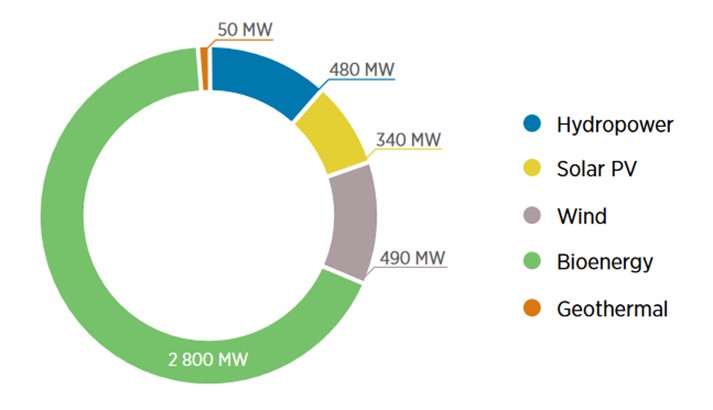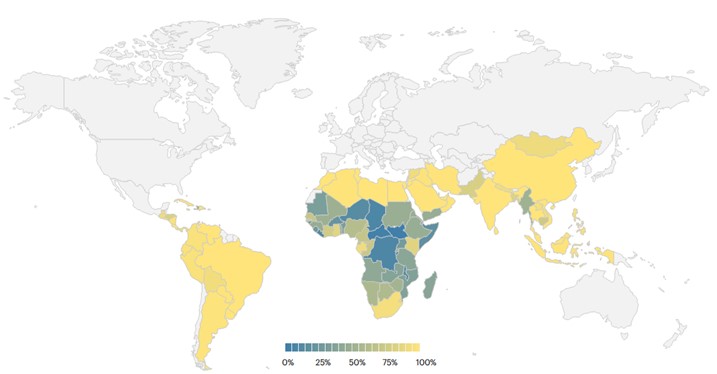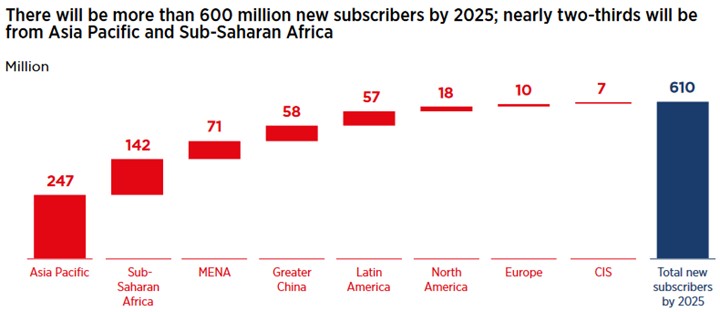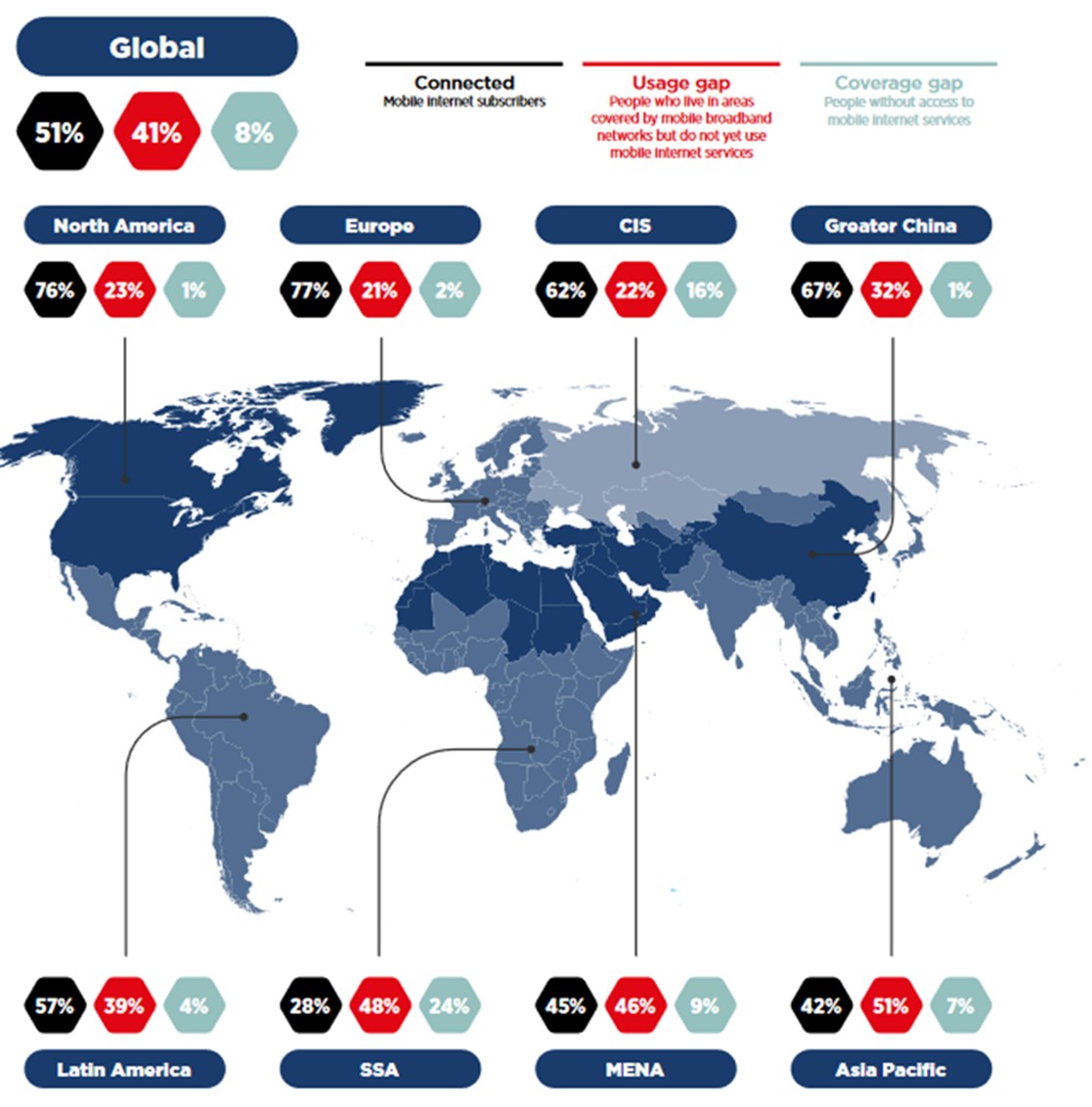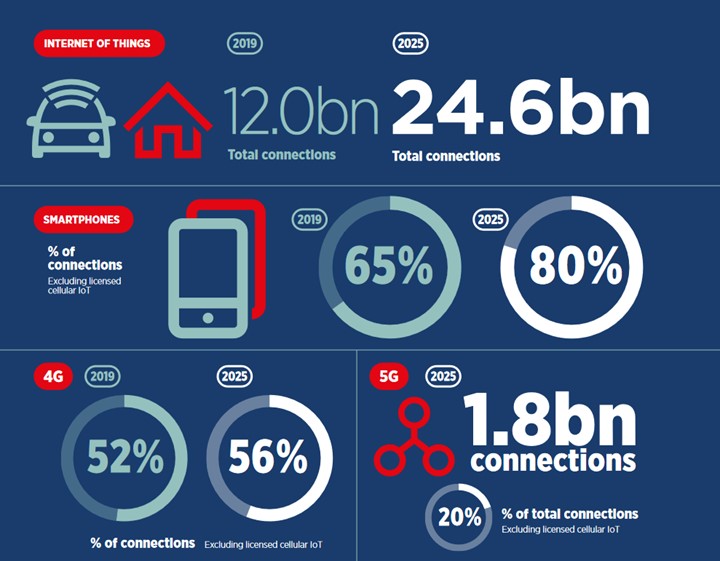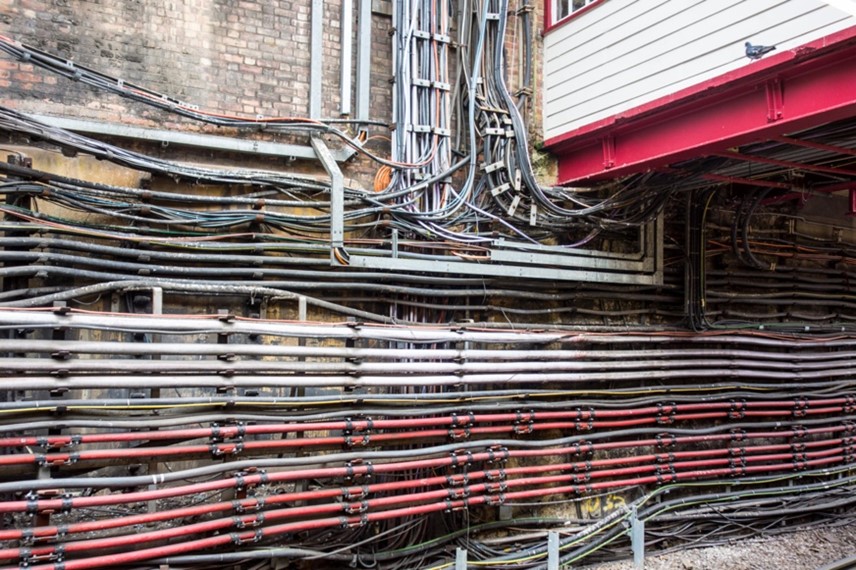Connecting the World Demands Wireless Off-Grid Solutions
Bridging the Digital Divide
To improve quality of life and help boost economic growth, the world needs to be connected. Over 3.8 billion people in the world currently have little or no Internet coverage due to a lack of access to grid power. This problem persists in urban landscapes and remote rural communities across both developed and emerging markets. To connect the world and provide global internet access, the way critical infrastructure operates needs to be re-imagined.
To participate in the data-driven economy, people require internet connectivity. To provide voice and data services to those unserved and underserved people requires the appropriate telecom infrastructure, which can be accessed by end users via mobile devices. In urban areas it is costly to access the grid, or change access to it (e.g., a new streetlight in an urban setting), and in remote areas there often is no electrical grid. To solve this problem, and connect the world, Wireless Off-Grid solutions must be adopted.
Solar technology is the next step in order to bring reliable power to everyone. Wireless or Smart Off-Grid solutions can deliver reliable power to any system. With reliable power comes reliable communication, and the two of them together connects people to the rest of the world, who previously were not. However, connectivity is only meaningful if it can be provided at affordable cost and adequate speed.
A Broadband Problem
According to UNICEF, two-thirds of the world’s school-age children have no Internet access in their homes. This represents 1.3 billion children between the ages of 3 to 17 years old. For those aged 25 years or younger, the number of people without Internet access at home increases to 2.2 billion. Poverty, the inability to own laptops/smartphones, and lack of communications infrastructure are often given as reasons for why everyone does not have Internet access.
What often aren’t cited as reasons for the lack of Internet access are lack of electrical power and associated power management systems. The best laptops, smartphones, and communications systems are all rendered useless without electrical power. However, lack of reliable power is a much larger issue, affecting numerous industries in both rural and urban regions across the world.

Source: World Bank Group
The Broader Problem
Lack of reliable electrical power is not limited to connecting people to the Internet; any electrical system that doesn’t have access to transmission or utility lines (the grid) is subject to sub-par performance, potentially resulting in increased lifetime costs and premature obsolescence. These are known as “off-grid” systems. Many telecom cell phone towers, satellite Wi-Fi systems, and Internet-of-Things (IoT) applications frequently don’t have access to utility grids and are dependent upon off-grid electrical power, which limits their deployment.
Perhaps more important is the ability to keep off-grid power systems charged. And keeping off-grid systems fully charged isn’t as simple as installing a solar panel and hoping for the best; what’s required is system intelligence that analyzes weather patterns, power consumption, and maintenance, building on predictive analytics. Furthermore, the best off-grid systems should offer this functionality in real-time and be accessible remotely.
Current Solutions
Today Off-grid (or wireless power) may not generate the largest share of global power; however, off-grid is often the only viable option for powering crucial infrastructure. The same could be said about telecommunications – only wired networked telecom was seen as a viable option, even in a wireless world. But traditional wired transmission and distribution of power is becoming more and more challenging and cost prohibitive to provide wider access. As a result, off-grid power perhaps has had the greatest human impact – both positive and negative. We’ve already detailed off-grid’s positive aspects. However, these positive improvements to peoples’ lives come at a cost. For example, many off-grid power solutions rely upon diesel generators (bad-grid) that emit greenhouse gases (GHG) and are very costly to operate. Thus, many off-grid systems are now transitioning to renewable energy solutions for electrical power in order to reduce GHG emissions and provide a more cost-effective viable solution that would unlock millions more applications.
Renewable energy sources are the way to remove operational and maintenance costs for off-grid projects. In 2019, Energy Sector Management Assistance Program (“ESMAP”) estimated that there were 19,000 mini-grids (“off-grids”) installed across 134 countries, representing US$28 billion of investment and another 26,000 planned projects. ESMAP noted that “most of these mini grids are diesel-fueled” which suggests a large market opportunity to replace diesel-fueled off-grid systems with renewable energy sources. These systems typically require maintenance (often occurring after a generator fails) and frequent trips to refuel and maintain a diesel generator, not to mention potential for diesel to be pilfered, leading to even greater operational inefficiencies. Renewable power is a way for companies and governments to reduce operational and capital expenditures. In fact, renewable off-grid solutions have already proven themselves, with about 4.16GW of capacity installed globally (Exhibit 1).
Exhibit 1: Renewable power sources for the global 4.16 GW off-grid power capacity in 2018
Market Size
In 2019, off-grid solar was a US$1.75 billion annual market, serving household and some community applications representing 420 million people with potential to reach a total of 1.8 billion people. As Exhibit 2 shows, Africa, Asia, South and Central America are where access to reliable electricity is challenging. The European Investment Bank estimated that 120 million African households lacked access to reliable and affordable electricity, and if no action is taken 60 million households will continue to lack by 2030. For those that do have grid power, the reliability is so bad that diesel generators back up is the norm. Even some people in developed countries do not have access to grid power; as recently as 2018, over 280 communities in Canada, representing about 200,000 people, were not connected to a utility grid, relying upon diesel and liquefied natural gas for their power needs.
Off-grid storage systems was a US$31.1 billion market in 2018 and forecasted to grow to US$58.5 billion by 2026. Off-grid storage requires batteries charged and discharged every day. Although lead acid and lithium are the go-to technologies today, innovation in storage is an area of major global investment with performance and price points expected to follow Moore’s law.
Exhibit 2: Proportion of Country Populations With Access to Electricity in 2019
Source: EIA.org
Dialing Up Off-Grid Telecom Infrastructure
At the end of 2019, 5.2 billion people (67% of the global population) subscribed to mobile services. The GSM Association estimated that 600 million people will gain access to mobile services between 2020 and 2026. Sixty percent of these new subscribers will come from Asia Pacific or Sub-Saharan Africa (Exhibit 3). We’ve highlighted the need to power projects that do not have access to utility-scale electrical grids. One of the use cases for off-grid renewable power is for powering remote telecom infrastructure, since about 3.8 billion people in the world have little or no mobile Internet coverage (Exhibit 4).
Exhibit 3: Geographic Distribution of New Mobile Service Subscribers Added from 2020 to 2026
Source: GSM Association
Exhibit 4: 8% of the World Has No Access to Mobile Internet Access Due to Coverage Gap
Source: GSM Association
Nearly half of all communications towers in Sub-Saharan Africa and about 16% of all towers in South and Southeast Asia are off-grid. About 80% of these towers are powered by diesel fuel. Worldwide, GSM Association estimates there are about 70,000 towers powered by renewable energy sources and even those are most often hybrid with generators. More interestingly, GSM Association’s September 2020 report cites data showing “investments in renewable energy are pervasive, with over 50 countries expanding their networks of renewable energy powered sites by 10 per cent or more. Despite having only about three per cent of the world’s towers, Sub-Saharan Africa now accounts for 14 per cent of global green sites.“
Pervasive IoT Applications Demand Off-Grid Power
Traditional solar power systems usually require connections to existing power grids and can therefore incur heavy capital costs. With the growth of solar in the renewable energy sector and the development of more reliable battery storage systems, companies are working to optimize the efficiency of off-grid energy systems. Therefore, going wireless to provide off-grid power has become increasingly popular. With broadband Internet access becoming increasingly available, and the number of IoT and mobile devices being used soaring, staying connected in real-time and sharing information has never been easier (Exhibit 5).
Exhibit 5: Connecting People-People and People-Technology in Real-Time
Source: GSM Association
IoT enabled devices drive greater efficiency and performance. These devices obviously need power, and the networks they connect to need to be widely pervasive, which means increasing tower density. This can be challenging in remote locations and expensive in urban locations. However, solar powered towers enable usage of these devices anywhere. This wireless power solution allows for an off-grid energy system that can be monitored, maintained, and serviced over the Internet (Smart Off-Grid).
Critical Urban Infrastructure – Lighting the Way in Developed Markets
The transition toward Smart Off-Grid as a way to power critical urban infrastructure in mature markets is already underway. Wireless power is the ideal replacement for traditional grid-connected systems in developed markets as aging infrastructure wears out. The global market for Off-Grid Solar Lighting was estimated at US$1.6 Billion in the year 2020 and is projected to reach a revised size of US$4.9 billion by 2027, growing at a CAGR of 17.3%. The U.S. market was estimated to make up US$473.1 million of the US$1.6 billion market in 2020.
Grid infrastructure is notoriously expensive to install and maintain. As a similar comparable to street lights, The City of Toronto estimates that a new traffic signal installation costs between $80,000 to $160,000 per installation, with yearly maintenance costs between $10,000 to $15,000 per installation. Beyond these heavy upfront capital and maintenance costs, connecting to the grid in cities often requires digging up the pavement and disrupting existing infrastructure, utilities, traffic, and residents. Wireless power removes the cost of cabling, distribution panels and metering and the need to disrupt existing infrastructure (Exhibit 6).
Exhibit 6: Cabling in the London Underground Rail Network (The Tube) Costs Over US$1,000 Per Meter
Source: Company reports
Fast-growing rural populations require innovative and cost-effective lighting infrastructure. Solar-powered lights are an alternative to grid-connected lights that are unreliable and costly. Climate change is forcing governments to realize that having everything connected to the grid means 100% mass outages when storms cause massive power outages. The need for a reliable and affordable alternative to supplement traditional grid electricity and provide resiliency has increased as populations rise and existing infrastructure ages.
Smart solar lighting systems provide more than just light. These full-service, integrated systems can include wi-fi, security cameras and other sensing capabilities to measure pedestrian activity and traffic patterns, monitoring air quality and weather patterns, undertake surveillance, and more. Wirelessly powered and remotely managed lighting systems eliminate the hard wires, while not compromising on durability, reliability, or aesthetics.
Centralized Remote Management & Control
Sophic Capital client Clear Blue Technologies [TSXV:CBLU, OTC:CBUTF] provides one of the industry’s most advanced Smart Off-Grid management technologies available in the market. Clear Blue’s Smart Off-Grid systems coupled with lllumience, which is Clear Blue’s a cloud-based solution, the Company provides real-time, 24×7, remotely controlled management, highly reliable, low cost off-grid systems. Providing wireless access via the Internet ensures that reliable power will constantly be delivered to customer’s system and devices will maintain optimal performance. The ongoing management service provided by Illumience transforms a historically on-grid, offline maintenance system into an off-grid, online, proactively operated and managed system. With Clear Blue’s technology, off-grid projects save on installation and maintenance costs while providing a better managed system for a variety of off-grid applications.
Coming Up…
In our next report, we’ll discuss Sophic Capital client Clear Blue Technologies Inc., a provider of clean, wireless power, off-grid solutions, in greater detail.

